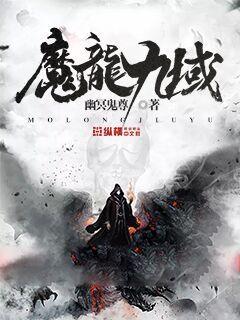
文章摘要的内容:
本文探讨了火箭球员登(假设为James Harden)在其职业生涯中的巅峰与挑战。首先分析了他的职业生涯高峰期,包括技术风格和领导能力的发展。其次讨论了他面临的挑战,如比赛中的压力和团队变动带来的影响。进一步探究了他在职业生涯中的成长历程和对球队的贡献,最后总结了他如何应对挑战并继续追求卓越。
James Harden 的技术风格如何在职业生涯中发展?他的进攻战术如何影响了球队的比赛策略?Harden 在哪些赛季表现最为突出?
他的领导能力如何在球队中得到体现?Harden 是如何在场上发挥出色并激励队友的?他的职业生涯高峰期具体表现在哪些比赛和赛季?
这一阶段的成功如何影响了他的个人品牌和球员形象?Harden 如何利用这些经验和成就来推动自己的职业生涯?
在职业生涯中,Harden 面临过哪些挑战?比如比赛中的关键时刻如何应对?他在面对防守强度增加时是如何调整自己的技战术?
团队中的变动对他的影响是怎样的?换队和队友的变动如何影响了他的表现和心态?
作为球队核心,Harden 如何处理外界对他的期望和批评?他是如何管理个人情绪以及在赛季中保持稳定的表现?
Harden 在职业生涯中如何成长和演变?他的技术和战术理解在不同阶段有何不同?
他在球队中的角色如何逐步发展?从早期的替补到核心球员的转变是如何发生的?
Harden 对球队的贡献主要体现在哪些方面?除了得分能力,他在防守、传球和团队合作方面的贡献如何?
面对职业生涯中的挑战,Harden 采取了哪些策略来应对?他是如何调整自己的技能和比赛风格以应对不同的竞争压力?
他在追求卓越方面有何独特之处?与其他顶级球员相比,Harden 的个人追求和职业态度如何帮助他在挑战中取得成功?
总结:
James Harden 的职业生涯展示了一位顶尖球员如何在竞技场上巅峰与挑战并存。通过技术的进步和领导力的发挥,他在球场上取得了显著的成就。然而,他也面临着诸多挑战,如比赛压力和团队变动,但他通过自身的成长和对团队的贡献,成功地应对了这些挑战,并继续追求卓越。
在未来,Harden 将继续以他的独特方式影响篮球界,并为球迷们带来更多精彩的比赛。
文章摘要的内容
日本球员近年来频繁进行海外转会,这一趋势不仅反映了日本足球的国际化发展,也深刻影响着球员市场和整体足球产业。本文将从趋势、市场和影响三个角度深入探讨这股潮流,分析其背后的动因和对日本足球及全球足坛的深远影响。
近年来,日本球员海外转会呈现出明显增长的趋势。首先,...
其次,日本球员海外转会的趋势不仅限于欧洲,还包括其他地区如中东、北美等。
此外,日本球员海外转会趋势的背后,还反映了日本足球逐渐实现国际化的发展战略。
日本球员海外转会不仅带动了国际转会市场的增长,还直接影响了球员身价和市场需求。
在欧洲五大联赛中,日本球员的市场表现逐渐引起球队和经纪人的关注。
此外,日本球员市场的扩展也促进了国内俱乐部的培养体系和转会收益的提升。
日本球员海外转会对日本足球的影响不仅体现在国内联赛的水平提升,还包括对国家队竞争力的增强。
在全球范围内,日本球员的海外转会也为国际足球注入了新的活力和多样性。
此外,日本球员海外转会还推动了日本足球文化在全球范围内的传播和认知度的提升。
综上所述,日本球员海外转会潮不仅是日本足球国际化战略的重要体现,也为全球足球市场带来了新的发展机遇。
随着时间的推移,我们可以期待日本球员在国际舞台上发挥更大的作用,同时也要关注其对国内足球产业和青训体系的深远影响。
Certainly! Here's the structured article on "Optimizing Training Performance through Nutrition and Diet for Professional Athletes":
**Abstract:**
Professional athletes rely heavily on nutrition and diet to enhance their training performance. This article explores key factors that optimize their performance through dietary strategies. It examines the role of macronutrients, micronutrients, hydration, and timing of meals in maximizing athletic potential. By understanding and implementing these factors, athletes can achieve peak performance and maintain optimal health.
---
**1、Macronutrients:**
Macronutrients play a fundamental role in the diet of professional athletes, influencing energy levels, muscle recovery, and overall performance.
Athletes typically require a balanced intake of carbohydrates, proteins, and fats to meet their energy demands and support muscle repair.
Carbohydrates serve as a primary fuel source, especially during high-intensity activities, emphasizing the importance of adequate intake and timing to sustain performance.
Proteins are essential for muscle repair and growth, with athletes needing slightly higher amounts to recover effectively from training sessions.
Timing protein consumption around workouts is crucial for maximizing muscle synthesis and adaptation to exercise-induced stress.
A variety of protein sources, including lean meats, dairy, and plant-based options, offer athletes flexibility in meeting their nutritional needs.
Healthy fats contribute to sustained energy levels and support overall health in athletes, emphasizing sources like nuts, seeds, and fatty fish.
A balanced intake of omega-3 and omega-6 fatty acids aids in reducing inflammation and optimizing recovery post-training.
Adjusting fat intake based on training intensity and individual metabolic needs helps athletes maintain optimal body composition and performance.
Carbohydrates are critical for replenishing glycogen stores and providing quick energy during intense exercise sessions.
Choosing complex carbohydrates such as whole grains and vegetables ensures sustained energy release and supports prolonged athletic performance.
Strategic carb-loading before competitions or high-demand periods helps athletes maximize glycogen storage and enhance endurance.
---
**2、Micronutrients:**
Beyond macronutrients, micronutrients are essential for maintaining overall health, supporting immune function, and optimizing athletic performance.
Athletes require adequate intake of vitamins and minerals to support physiological processes, including bone health, oxygen transport, and muscle contraction.
Key micronutrients such as iron, calcium, vitamin D, and antioxidants play crucial roles in reducing the risk of injury and illness among athletes.
Iron is vital for oxygen transport and energy production, particularly significant for endurance athletes to prevent fatigue and optimize performance.
Calcium supports bone health and muscle function, essential for maintaining skeletal integrity and reducing the risk of stress fractures.
Ensuring sufficient intake of these minerals through diet and, if necessary, supplementation helps athletes meet their unique nutritional demands.
Vitamins such as vitamin D, C, and E contribute to immune function and recovery, aiding in the repair of muscle tissue and reducing oxidative stress.
Antioxidants from fruits, vegetables, and nuts help mitigate exercise-induced inflammation and support cellular repair processes post-exercise.
Strategies to incorporate a diverse range of micronutrient-rich foods into an athlete’s diet promote overall health and optimize training adaptations.
Hydration is critical for maintaining performance and preventing dehydration-related complications during training and competition.
Athletes should monitor fluid intake to replace losses through sweat, adjusting consumption based on environmental conditions and individual sweat rates.
Optimal hydration supports thermoregulation, nutrient transport, and cognitive function, enhancing overall athletic performance and recovery.
---
**3、Timing of Meals:**
The timing of meals and nutrient intake around training sessions is crucial for optimizing energy availability, promoting recovery, and supporting adaptation to exercise stress.
Strategic meal timing helps athletes maximize glycogen storage, enhance muscle protein synthesis, and minimize muscle breakdown.
Pre-exercise nutrition focuses on providing adequate carbohydrates for fuel and minimizing gastrointestinal distress during workouts.
Consuming a balanced meal or snack containing carbohydrates and a moderate amount of protein 2-4 hours before exercise provides sustained energy and supports muscle function.
Hydration before exercise ensures adequate fluid balance and enhances thermoregulation during physical exertion, optimizing performance and reducing the risk of dehydration.
Immediately following exercise, consuming a combination of carbohydrates and proteins within the first 30 minutes to 2 hours supports glycogen replenishment and muscle repair.
Timing protein intake post-exercise stimulates muscle protein synthesis, facilitating recovery and adaptation to training-induced stress.
Incorporating micronutrients and fluids into post-exercise meals aids in rehydration, replenishment of electrolytes, and overall recovery.
Strategically timing meals and snacks throughout the day maintains stable blood sugar levels and sustains energy for consistent training performance.
Adjusting nutrient intake based on training volume and intensity helps athletes meet their energy demands and achieve optimal nutrient timing for enhanced performance.
Individualized nutrition plans tailored to training schedules and performance goals optimize nutrient timing strategies, supporting long-term athletic success.
---
**4、Conclusion:**
Optimizing training performance through nutrition and diet involves a comprehensive approach focusing on macronutrients, micronutrients, hydration, and meal timing.
By understanding the role of each component and implementing evidence-based strategies, athletes can enhance performance, support recovery, and maintain overall health.
Continued research and personalized nutrition plans are essential to meet the unique needs of professional athletes and maximize their athletic potential.
Overall, integrating these key factors into a structured nutrition plan empowers athletes to achieve peak performance and excel in their respective sports.
### 文章摘要
本文探讨了球员翻跟头这一动作如何结合运动技能探索与身体协调,展示了其在体育运动中的多重价值。通过对动作起源、技术要素、训练方法以及心理影响的深入分析,揭示了翻跟头背后蕴含的复杂运动学原理和训练科学。这些内容不仅帮助理解翻跟头背后的身体机制,还展示了它如何成为体育训练中的重要组成部分,提升运动员的综合能力与竞技水平。
---
翻跟头作为古老而精彩的体育动作,其起源可以追溯到古代体操与民间舞蹈的融合。从古希腊奥运会到现代体育比赛,翻跟头一直扮演着重要角色。
随着体育竞技的发展,翻跟头从简单的表演动作演变为复杂的竞技项目,体现出人类对身体极限的不断探索。
现代翻跟头的技术要素包括速度、力量和柔韧性等多个方面,这些要素共同决定了运动员执行动作时的精准度和安全性。
执行翻跟头动作需要运动员掌握良好的身体姿势和运动力学原理。关键的技术要素包括起跳力道的掌控、空中姿势的稳定性以及着地时的身体协调。
借助现代科技手段,如运动捕捉系统和生物力学分析,科学家们能够更深入地研究和优化翻跟头动作的执行方式,提高其效率和安全性。
许多体操和健身教练通过系统化的训练课程帮助运动员逐步掌握翻跟头的技术要领,从而提高其在比赛中的表现。
成功的翻跟头训练不仅仅依赖于技术手段,还需要科学的训练方法和策略。从基础动作的逐步学习到复杂动作的练习,运动员需要经历系统的训练过程。
心理训练在翻跟头训练中同样至关重要,运动员需要克服恐惧心理,保持专注和自信,以确保在紧张的比赛环境中表现出色。
个性化的训练计划能够根据运动员的身体特征和能力水平进行调整,帮助其达到最佳的运动表现。
翻跟头作为体育训练中的一部分,不仅仅是技术动作的执行,更是心理素质和竞技应用能力的体现。
运动员在实践翻跟头过程中,需要面对竞技压力和身体风险,这对其心理承受能力提出了挑战。
翻跟头的成功不仅仅依赖于技巧和力量,还需要运动员具备良好的反应速度、适应能力和赛场心态。
总结:
通过深入分析球员翻跟头动作的起源、技术要素、训练方法以及心理影响,我们可以看到它不仅是体育运动中的一种技巧,更是身体与技能完美结合的典范。翻跟头不仅仅是运动员身体能力的展示,更是体育训练中复杂运动学原理和心理训练的综合体现。
翻跟头的学习和掌握,不仅能提升个人技能水平,还能培养运动员的自信心和适应能力,为其在各类竞技场合中取得优异成绩打下坚实基础。
文章摘要:在“马大帅:一个传奇人物的崛起与辉煌”中,我们将探索一个非凡人物的生平与事迹。从他的成长经历到事业的起步,再到他的领导才能和影响力的扩展,以及最终的辉煌成就,这篇文章将带您深入了解这位传奇人物的生平与成就。
马大帅出生于一个普通的农村家庭,他的成长经历受到了家庭、环境和时代的影响。从小就展现出过人的聪明才智和坚韧不拔的品质,为他日后的崛起奠定了坚实的基础。
他在家庭和社会环境的影响下,逐渐形成了独特的性格和价值观,这些都在他日后的事业中起到了重要的作用。
随着时间的推移,马大帅经历了许多人生的起伏,但他始终坚守初心,努力奋斗,从中汲取了宝贵的人生经验。
马大帅的事业起步并不轻松,他经历了许多挑战和困难。但正是在这些挑战中,他展现出了非凡的才能和毅力。
通过不懈的努力和勤奋的工作,马大帅逐渐获得了业界的认可和信任,为他的事业奠定了坚实的基础。
他在事业起步阶段所展现出的勇气和决心,为他日后的辉煌成就打下了坚实的基础。
随着事业的不断发展,马大帅展现出了卓越的领导才能和影响力。他以其独特的魅力和智慧,赢得了团队和合作伙伴的尊重和信任。
马大帅的领导风格注重团队合作和共赢,他擅长发挥团队的力量,实现共同的目标和愿景。
他的影响力不仅局限于自己的行业,还波及到了社会的各个领域,为他赢得了广泛的赞誉和尊重。
在漫长的事业生涯中,马大帅取得了许多令人瞩目的成就。他不仅在自己的领域取得了巨大成功,还为社会做出了重要贡献。
他的辉煌成就不仅体现在物质上的成功,更体现在精神上的丰富和成长。
马大帅的传奇人生将永远激励着后人,成为无数人学习和追求的榜样。
总结:
通过对马大帅传奇人生的探索,我们不仅了解了一个非凡人物的生平与事迹,更深刻领悟到了奋斗与坚持的重要性。马大帅的故事告诉我们,只要坚持不懈,努力拼搏,就一定能够实现自己的梦想,创造辉煌的人生。
马大帅的传奇人生将永远激励着我们,成为我们追求成功和奋斗的重要力量。
文章摘要的内容:
罗卡是足球场上的新秩序领袖,他以领袖魅力和卓越技术统御球场,引领球队赢得胜利。本文将从四个方面详细阐述罗卡的领袖风范:领袖气质、技术精湛、团队粘合力和赛场智慧。通过对这四个方面的深入分析,揭示出罗卡在足球领域的独特魅力和影响力。
罗卡作为一名领袖,展现出非凡的气质,他的领导能力激励着整个团队,...
他的果断决策和冷静沉着的态度让人印象深刻,...
同时,罗卡在关键时刻能发挥出色的韧性和应变能力,...
除了领袖气质,罗卡的技术精湛也是他成为新秩序领袖的重要因素,...
他在比赛中的传球和射门技术堪称一流,...
罗卡的意识和视野使他能够准确把握比赛节奏和机会,...
在团队合作方面,罗卡展现出了强大的凝聚力,他善于与队友沟通合作,...
他对团队的信任与支持让队友们更加团结,...
罗卡始终以身作则,为团队树立榜样,...
在赛场智慧方面,罗卡独具慧眼,他能够迅速洞察对手战术,...
他善于制定战术并灵活调整策略,使球队在比赛中占据优势,...
罗卡的智慧让他成为足球场上无人可及的领袖,...
总结:
罗卡作为足球场上的新秩序领袖,凭借领袖气质、技术精湛、团队粘合力和赛场智慧,展现出非凡的魅力和影响力,成为球场上的璀璨明星。